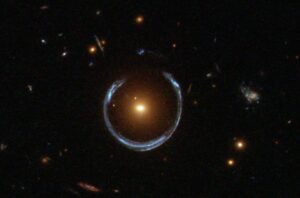Russia’s first mission to the moon in 47 years has failed. During pre-landing maneuvers on August 19, the Luna-25 probe crashed into the moon.
It seems that the probe got into difficulty during the engine burn. Roscosmos (the Russian space agency) lost contact with the probe 47 minutes after the engine began firing, then Luna-25 veered off of its planned orbit.
“During the operation, an emergency situation occurred on board the automatic station, which did not allow the maneuver to be performed with the specified parameters,” Roscosmos commented as the situation unfolded.
Destroyed on impact
Roscomos has since confirmed that “measures taken on August 19 and 20 to locate the craft and make contact with it were unsuccessful.” They lost contact with Luna-25 at 14:57 (11:57 GMT) on Saturday. Roscomos stated that the probe “ceased to exist” following the unplanned crash landing. There will be a formal investigation into what caused the crash.

Images of the moon’s surface taken by Luna-25. Photo: Roscosmos
Roscosmos scheduled the probe to land at the moon’s south pole on August 21. It would have made history, becoming the first spacecraft to soft land in the region.
Russia launched the 800kg lander on August 11. On August 13, it took its first photos in space, showing the moon and Earth in the background. A few days later, on August 16, it entered the lunar orbit, and a day later it took its first detailed photos of the moon’s surface.
Roscosmos planned to land the probe just north of the Boguslawsky crater. Astronomers think the area could hold water ice. The probe was carrying eight scientific instruments to search for water ice, take samples, and collect geological data.
An ominous start
Roscosmos had hoped that the Luna-25 would be the start of a series of successful lunar missions. But perhaps it was a rushed job; unlike most other lunar missions, Russia opted to go straight for a moon landing. Usually, space agencies first undertake a simpler orbital mission before attempting a landing.
Because the Russian government has redirected most funding to its military in light of its invasion of Ukraine, the space program has declined in recent years. Coverage of the failed landing has been minimal in Russia. State television gave the crash just 26 seconds of air time.
Russia was in an unplanned “race” with India to reach the moon’s south pole. Both projects aimed to soft land within days of each other. To add salt to the wound, while Russia told the world their probe had crashed, India declared that they have scheduled Chandrayann-3 to land on August 23.






